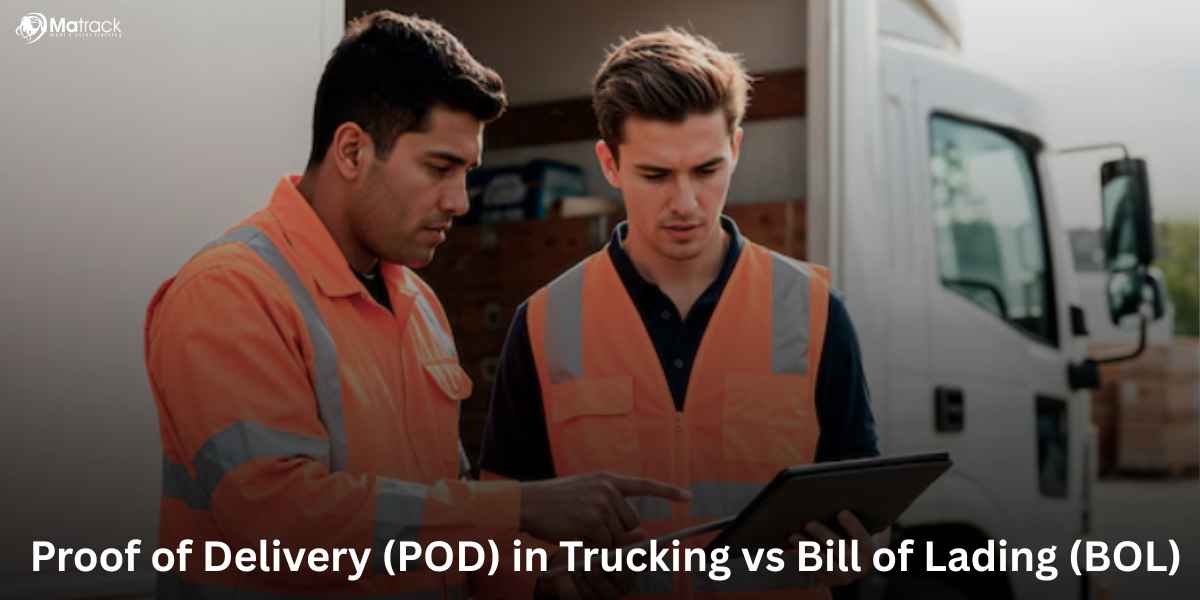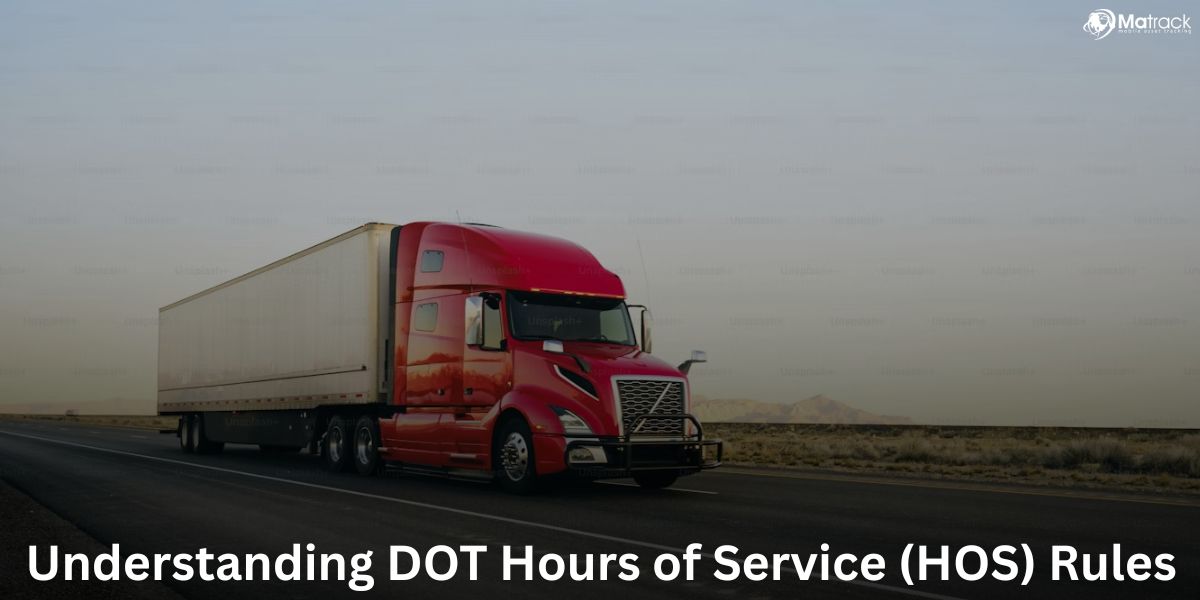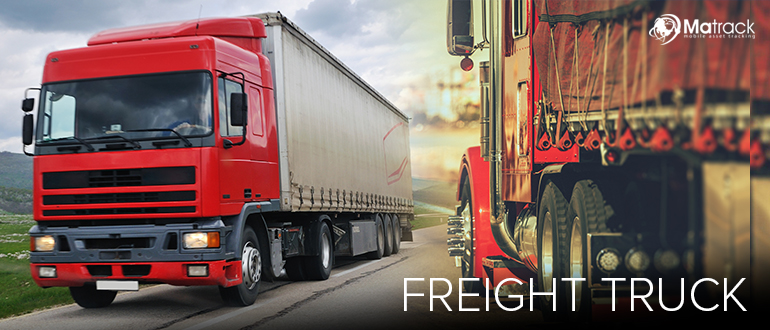Key Takeaways:
- A Bill of Lading defines how goods will be transported and sets the shipping contract in motion.
- Proof of Delivery confirms that the shipment was completed and the goods reached the right hands.
- These documents appear at different stages but together create a full record of the shipment journey.
- Understanding both helps avoid disputes, protect all parties, and keep deliveries on track.
What Is Proof of Delivery in Trucking?
Proof of Delivery in trucking confirms that goods have reached the intended consignee. Proof of Delivery serves as legal evidence that the carrier has fulfilled its delivery obligation.
The document includes critical information such as the receiver’s signature, delivery date, delivery time, and any notes on the condition of the goods. These details protect both the carrier and the shipper against disputes or false claims of non-delivery.
Carriers generate Proof of Delivery at the exact moment the consignee accepts the shipment. This confirmation signals that the shipment process is complete and the carrier’s responsibility has ended.
What Are the Key Features of Proof of Delivery?
- The receiver’s signature, which confirms the goods were handed over at the right place.
- The exact date and time of delivery, showing when the handover happened.
- Notes on the condition of the goods, in case there was damage or anything missing.
- The name and contact of the driver or carrier who completed the delivery.
- A shipment reference number that links the Proof of Delivery to the original order.
- Any special remarks or exceptions noted at the time of delivery.
How To Generate Proof of Delivery?
Once you understand the features that make up a Proof of Delivery, it becomes easier to see how to create one. The goal is to make sure everything about the delivery is clearly documented and easy to verify.
- Start by preparing the delivery paperwork with the correct shipment details and reference numbers.
- When you reach the destination, record the exact date and time of the delivery.
- Ask the receiver to sign the document as proof they accepted the goods.
- If anything looks damaged or incomplete, write it down right away on the form.
- Make sure to add the driver or carrier’s name and contact details to the document.
- Finally, keep the completed Proof of Delivery somewhere safe, either as a paper copy or in a digital system.
Advantages and Disadvantages of Proof of Delivery
| Advantages of Proof of Delivery | Disadvantages of Proof of Delivery |
| Provides clear evidence that goods were delivered | Requires accurate documentation at delivery point |
| Protects carrier and shipper from false delivery claims | Can delay operations if signatures or data are missing |
| Helps resolve disputes quickly with documented proof | May add administrative workload for carriers |
| Ensures smooth payment processing for completed orders | Errors in recording details can cause legal complications |
| Strengthens trust between shipper, carrier, and receiver | Loss of document can create proof gaps in disputes |
What Is Bill of Lading in Trucking?
A Bill of Lading is a legal document that forms the contract between the shipper and the carrier. It sets out the terms under which the goods will be transported from origin to destination.
This document lists important details, including the type of goods, their quantity, and where they are being shipped. These details ensure that everyone involved knows exactly what is being moved and where it is going.
The Bill of Lading works as both a receipt for the goods and proof of the carriage agreement. It confirms the carrier has taken possession of the goods and promises to deliver them as specified.
What Are the Key Features of Bill of Lading?
- The shipper’s and consignee’s names and addresses, identifying both parties involved.
- A detailed description of the goods, including quantity, weight, and type.
- The origin and destination points, stating where the shipment starts and where it ends.
- The carrier’s name and contact information, showing who is responsible for transport.
- Specific instructions or handling notes for the shipment.
- A shipment reference number linking to the order or contract.
How To Generate Bill of Lading?
After understanding the key features, generating a Bill of Lading becomes a matter of careful documentation. The aim is to create a contract that protects both the shipper and the carrier during transport.
- Complete shipper and consignee details on the Bill of Lading form before shipment starts.
- List the goods clearly, including type, weight, quantity, and any special handling notes.
- Specify the origin and destination addresses accurately.
- Add carrier details, including company name and contact information.
- Include the shipment reference number for tracking and contract purposes.
- Get the necessary signatures from both the shipper and the carrier at the time of loading.
Advantages and Disadvantages of Bill of Lading
| Advantages of Bill of Lading | Disadvantages of Bill of Lading |
| Creates a clear legal contract for carriage | Errors can cause customs or delivery delays |
| Acts as a receipt confirming goods are with the carrier | Must be prepared accurately to avoid disputes |
| Serves as a document of title for the goods | Loss of document can complicate proof of shipment rights |
| Helps in customs clearance and international shipping | Can increase paperwork and administrative tasks |
| Protects both shipper and carrier from disputes | Incorrect details can lead to legal or financial issues |
What Are The Key Differences Between Proof of Delivery and Bill of Lading?
While Proof of Delivery and Bill of Lading are both important documents in trucking, they serve different purposes at different stages of the shipment. These differences become clear when you look at their role, timing, signatories, legal value, and the details they capture.
Purpose
The Bill of Lading sets the terms for how goods will be transported from the shipper to the consignee. The Proof of Delivery confirms that those goods were delivered as agreed.
Timing
The Bill of Lading is created at the start of the shipment before the goods leave the shipper. The Proof of Delivery comes into play at the end, once the goods have reached the consignee.
Signatories
The Bill of Lading is signed by both the shipper and the carrier when the goods are loaded. The Proof of Delivery is signed by the receiver when the goods are handed over.
Legal Role
The Bill of Lading acts as a contract, a receipt, and sometimes even a document of title for the goods in transit. The Proof of Delivery serves as evidence that the delivery was completed as expected.
Details Captured
The Bill of Lading records details like who is shipping and receiving, what is being shipped, and where it’s going. The Proof of Delivery captures the delivery time, date, receiver’s signature, and any notes about the goods’ condition on arrival.
Conclusion
Both Proof of Delivery and Bill of Lading play crucial roles in trucking by documenting different stages of a shipment. The Bill of Lading sets the terms for transporting goods, while the Proof of Delivery confirms that those goods arrived as expected.
Together, these documents protect shippers, carriers, and receivers by creating a clear paper trail from pickup to delivery. Understanding their differences helps ensure smoother operations, fewer disputes, and stronger trust between all parties involved.



